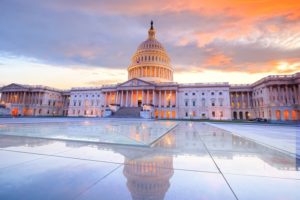
Random audit programs should prioritize transparency to enhance legitimacy and minimize reputational risks.
Rigorous policy evaluation often involves randomization, and both federal and state governments have used randomization for a variety of purposes for approximately two centuries. But in the particular context of random government audits, transparency of process is crucial—especially when non-compliance can have reputational effects.
One of the first recorded government randomizations was by states in the early 1800s. It involved the shameful removal of indigenous people from their land followed by distribution of that same land to white people via land lottery. Other randomizations over time have included diversity visa lotteries, the draft lottery for selective military service, and education lotteries to place students in public schools. Panels of judges are often randomly assigned to review cases, and administrators on some government boards are also randomly assigned to make decisions.
Randomizations for policy evaluation are now so common that the U.S. General Services Administration has an Office of Evaluation Sciences that has conducted over 70 randomized policy experiments. Governments also regularly conduct audits, some random and some not. Examples include audits of financial records by the U.S. Securities and Exchange Commission, random audits of lobbying disclosures by the U.S. Government Accountability Office (GAO), audits of federal taxpayers to assess compliance with the Internal Revenue Code, and randomized review of Board of Veterans’ Appeals opinions for quality control. Those audited include regular citizens, firms, agencies, policies, lobbyists, and even elected officials.
As we explain in a recent article published in the journal Public Choice, government regulators may want to conduct random audits for several reasons.
First, random audits are a fair method of allocating resources. Assuming that regulators are not able to audit all entities of interest, random audits allow every potential person or firm subject to audit to have a similar probability of being audited.
Second, random audits by government agencies are effective policy tools to encourage regulatory compliance. In addition, ongoing random audits may allow for longer-term equilibrium effects to emerge, as people and entities select into or out of the regulatory regime because the audits raise the costs of both compliance and non-compliance.
Third, randomization by government agencies allows for policy evaluation: Are regulatory policies working as intended? Do the incentives embedded within policies change behavior? Audits can also allow regulators to test the outcome of policies that may have unintended effects. Before a full launch of a new regulatory policy, piloting the policy on a randomly selected subset of intended program members allows policymakers to refine the policy—or abort it—before the final launch.
One random audit of particular interest is the Federal Election Commission’s (FEC) random auditing of campaigns for the U.S. House of Representatives and U.S. Senate following the 1976 elections. The FEC made a series of decisions in its rollout of the audits. First, it decided to do random audits in the first place. As a retired auditor who was present at the time told us, when the FEC was created, former GAO auditors then at the FEC assumed they would conduct audits, simply because they had always audited all Senate campaigns while at GAO.
Of course, the House of Representatives is much bigger than the Senate, so the auditors knew their resources would never permit them to audit all campaigns for House districts. Guided by their prior experience, they decided that they could audit 10 percent of House seats after every election. But how to select them? Fairness dictated random selection, and so they used a computer-based randomizer and selected 10 percent of House seats to audit.
Evidence from local newspaper reporting indicates that the FEC communicated information about the audits in a confusing way. It reassured journalists who inquired about the audits that they were routine in nature, but it did not release a list of seats chosen for audit to inquiring journalists after the drawing occurred. Perhaps the FEC wanted audited candidates to control the information about the audits—after all, once the results were all in, 43 percent of the audits uncovered violations of the brand-new campaign finance rules.
Publicizing that a member of the House of Representatives had been selected for random audit would have given local journalists an invitation to follow up on the results of the audit, potentially exposing the member to a scandal. But the choice to disclose the names of the audited members only when the audits were completed—in most cases, months after the random draw—came with a downside. Inattentive constituents might have assumed that audits were conducted based on suspicion of malfeasance, endangering the electoral fortunes of the 57 percent of randomly selected members whose audits uncovered no campaign finance violations.
Electoral regulators are in a particularly vulnerable institutional position, as their appropriations and oversight levels are determined by the people they regulate. Sure enough, the FEC soon found itself on the defensive in oversight hearings on Capitol Hill. The hearing transcripts reveal that some members of the committee found the audits to be annoying and questioned the randomization itself. Unsurprisingly, the audit program was defunded going forward.
The FEC’s rollout of the audits may have been important to the program’s eventual defunding. But it is possible that the failure to disclose the list of seats selected for random audit made voters less likely to believe that the audits were routine. The experience of the Fair Political Practices Commission (FPPC), California’s campaign finance regulator, may be instructive for electoral agencies planning random audits in the future.
The FPPC regulates money in California politics, and it uses random audits to encourage compliance and uncover noncompliance. But its audit procedures are more transparent than the procedures the FEC used in the 1970s, and the differences probably help minimize the negative impact of being audited in California. Most importantly, the FPPC conducts the random drawings in public and lists the selections on its website.
Government randomization has a long history and is growing increasingly common. When a government conducts random audits whose results present reputational risks to the subjects, program rollout is important. Policymakers planning random audits would be well-served to follow the lead of California’s FPPC by conducting randomized audits in the sunlight, allowing those selected for audit to show that their audit truly is routine in nature.
This essay is part of a 13-part series, entitled Using Rigorous Policy Pilots to Improve Governance.





